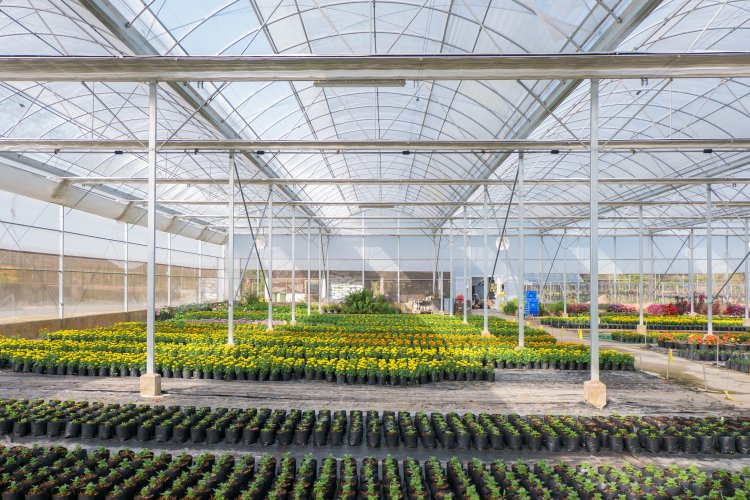Why Light Quality Matters for Large-Scale Farming Operations
Commercial LED Grow Lights have emerged as the top choice among the available options due to their capability to deliver optimal light spectrums, energy efficiency, and adaptability to various agricultural environments.

The productivity and profitability of large-scale farming operations hinge on several key factors, with light quality being one of the most crucial. Whether managing a high-tech greenhouse facility or an indoor farming setup, selecting the right lighting solution can drastically impact crop yield, quality, and growth cycles. Commercial LED Grow Lights have emerged as the top choice among the available options due to their capability to deliver optimal light spectrums, energy efficiency, and adaptability to various agricultural environments.
How Light Quality Matters in Crop Production
Light quality refers to both the spectrum (wavelengths) and intensity of light that plants receive, which directly influences processes like photosynthesis, flowering, and overall growth. In large-scale operations, it is essential to ensure that plants are exposed to a precise balance of light that stimulates healthy growth and maximizes yield. This is where Commercial Full Spectrum LED Grow Lights excel. These lights replicate the balance of natural sunlight, allowing plants to undergo efficient photosynthesis improving plant structure and productivity.
Advantages of Using Commercial LED Grow Lights
- Consistent Light Output
Unlike traditional lights, LEDs distribute light uniformly, ensuring all plants receive equal exposure. This consistency leads to uniform growth, resulting in better crop quality and reduced variations in produce size. Ultimately, this boosts profitability by minimizing waste and maximizing marketable yields. - Longer Lifespan
Commercial LED Grow Lights have a considerably longer lifespan than other lighting options. With an average operational life of 50,000 hours or more, they require fewer replacements, reducing maintenance costs and downtime in large-scale farming setups. - Adaptability to Various Agricultural Environments
LED grow lights can be adjusted to suit various agricultural settings, including indoor farms, vertical farms, and greenhouses. Their modular design allows easy integration into existing systems, making them a versatile option for growers looking to upgrade their lighting solutions. - Reduced Heat Emission
LEDs emit significantly less heat than traditional grow lights, preventing heat stress and maintaining a stable growing environment. This feature minimizes the need for extensive cooling systems, further lowering energy costs and reducing the risk of crop damage due to excessive heat. - Customizable Light Spectrums
Commercial LED Grow Lights offer the advantage of fine-tuning light spectrums to match the exact requirements of different crops. Growers can adjust red, blue, and other wavelengths to optimize plant characteristics like flavor, color, and flowering patterns, enhancing crop quality and consumer appeal.
Key Considerations for Selecting Commercial Grow Lights
When selecting the right lighting solution for a large-scale operation, growers should keep several factors in mind:
- Light Spectrum
A full-spectrum LED light with red, blue, and white wavelengths is ideal, as it supports all growth stages, from seedling to maturity. - Light Intensity and Coverage
The intensity and coverage area of the lights must be adequate for the facility's size. Proper light planning ensures uniform light distribution, preventing under- or over-exposure. - Energy Consumption
Since energy costs account for significant overhead expenses, choosing high-efficiency LED lights can help maintain profitability in large-scale operations.
Boosting Yields with Wholesale Commercial Grow Lights
Investing in wholesale commercial grow lights can provide large-scale growers with several significant financial and operational advantages. Bulk purchasing directly from wholesalers helps reduce the per-unit cost of each lighting fixture, enabling growers to allocate more resources to other critical areas of their business, such as nutrient management or facility upgrades. By purchasing in bulk, growers also benefit from economies of scale, lowering overall investment costs while securing high-quality lighting solutions that are typically more expensive if purchased individually.
Impact of Light Quality on Crop Health
High-quality light is essential for regulating various physiological processes in plants. With the right light spectrum, growers can:
- Enhance Chlorophyll Production
A balanced spectrum promotes the production of chlorophyll, which is crucial for photosynthesis and overall plant vitality. - Optimize Flowering and Fruiting
Proper light management triggers timely flowering and fruiting, improving yield and crop quality. - Reduce Stress and Improve Resilience
Consistent and appropriate light exposure minimizes plant stress, reducing the likelihood of stunted growth or poor yields. High-quality LED lights ensure stable conditions, promoting robust and healthy crops.
Final Considerations
Choosing the right lighting solution is a critical decision for large-scale farming operations. With rapid advancements in LED technology, Commercial LED Grow Lights now offer a reliable, energy-efficient, and customizable solution for greenhouse facilities and indoor farming setups. These lights enhance crop quality and yield and support sustainable agricultural practices by reducing energy consumption and lowering long-term operational costs.
Investing in Wholesale Commercial Grow Lights is a strategic choice for growers looking to optimize their operations and improve crop outcomes. Focusing on light quality can help large-scale farms achieve consistent success, healthier plants, and higher profitability, making LED technology an essential component of modern agricultural success.
What's Your Reaction?


















